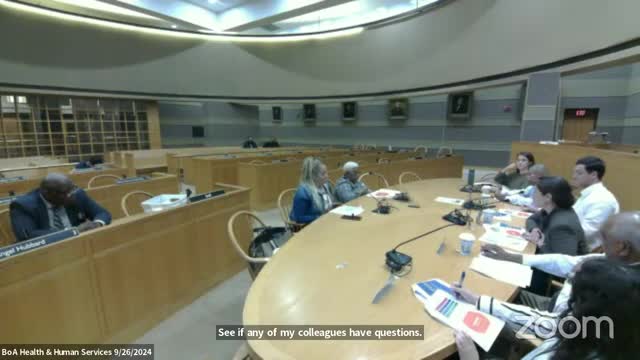Urgent call for solutions to rising homelessness crisis
September 26, 2024 | New Haven County, Connecticut
This article was created by AI summarizing key points discussed. AI makes mistakes, so for full details and context, please refer to the video of the full meeting. Please report any errors so we can fix them. Report an error »

In a recent government meeting, officials discussed the escalating homelessness crisis in the community, highlighting a troubling increase in both unsheltered individuals and open drug use. The conversation revealed that while shelters are often at capacity, the need for effective solutions is more pressing than ever, with reports indicating a rise from approximately 273 unsheltered individuals in August to nearly 400 by the end of September.
Officials acknowledged the complexities of the situation, noting that not all individuals engaging in drug use are homeless, which complicates public perception and response strategies. The pandemic's long-term effects were also cited as a significant factor contributing to the current crisis, with many individuals losing stable housing and jobs during this period.
Shelters are employing a \"diversion\" strategy to assist those seeking help when beds are full, encouraging individuals to explore alternative support systems. However, the effectiveness of this approach remains uncertain, with staffing shortages further complicating the response to the growing need.
The meeting also addressed the importance of transitioning individuals from shelters to permanent housing solutions. Officials emphasized that simply increasing shelter beds is not a sustainable solution to homelessness. Instead, they are focusing on creating permanent housing options and supportive services tailored to the needs of the community. Plans are underway to develop 500 new housing units, including deeply affordable and supportive options, to better serve the rising population of homeless individuals, particularly seniors who are increasingly finding themselves without stable housing.
As the community grapples with these challenges, officials are committed to a strategic approach that prioritizes long-term solutions over temporary fixes, aiming to create a more sustainable framework for addressing homelessness in the region.
Officials acknowledged the complexities of the situation, noting that not all individuals engaging in drug use are homeless, which complicates public perception and response strategies. The pandemic's long-term effects were also cited as a significant factor contributing to the current crisis, with many individuals losing stable housing and jobs during this period.
Shelters are employing a \"diversion\" strategy to assist those seeking help when beds are full, encouraging individuals to explore alternative support systems. However, the effectiveness of this approach remains uncertain, with staffing shortages further complicating the response to the growing need.
The meeting also addressed the importance of transitioning individuals from shelters to permanent housing solutions. Officials emphasized that simply increasing shelter beds is not a sustainable solution to homelessness. Instead, they are focusing on creating permanent housing options and supportive services tailored to the needs of the community. Plans are underway to develop 500 new housing units, including deeply affordable and supportive options, to better serve the rising population of homeless individuals, particularly seniors who are increasingly finding themselves without stable housing.
As the community grapples with these challenges, officials are committed to a strategic approach that prioritizes long-term solutions over temporary fixes, aiming to create a more sustainable framework for addressing homelessness in the region.
View full meeting
This article is based on a recent meeting—watch the full video and explore the complete transcript for deeper insights into the discussion.
View full meeting
